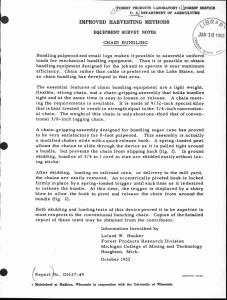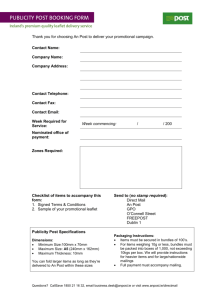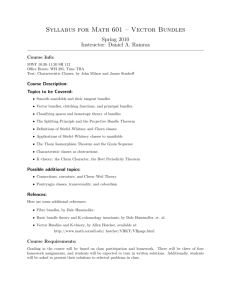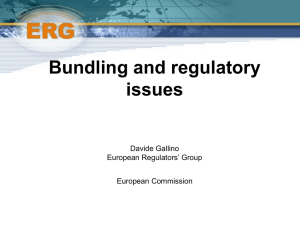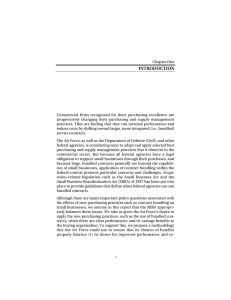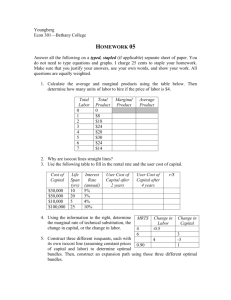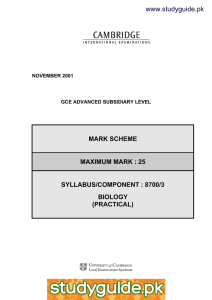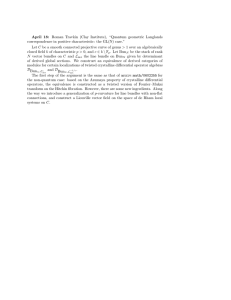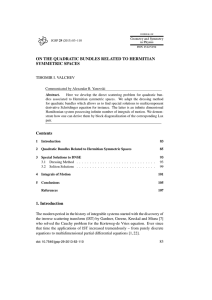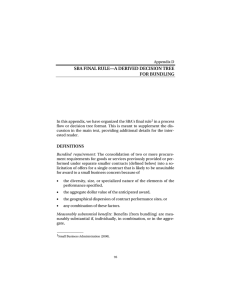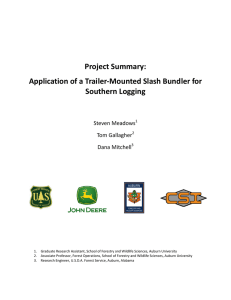CONCLUSIONS
advertisement
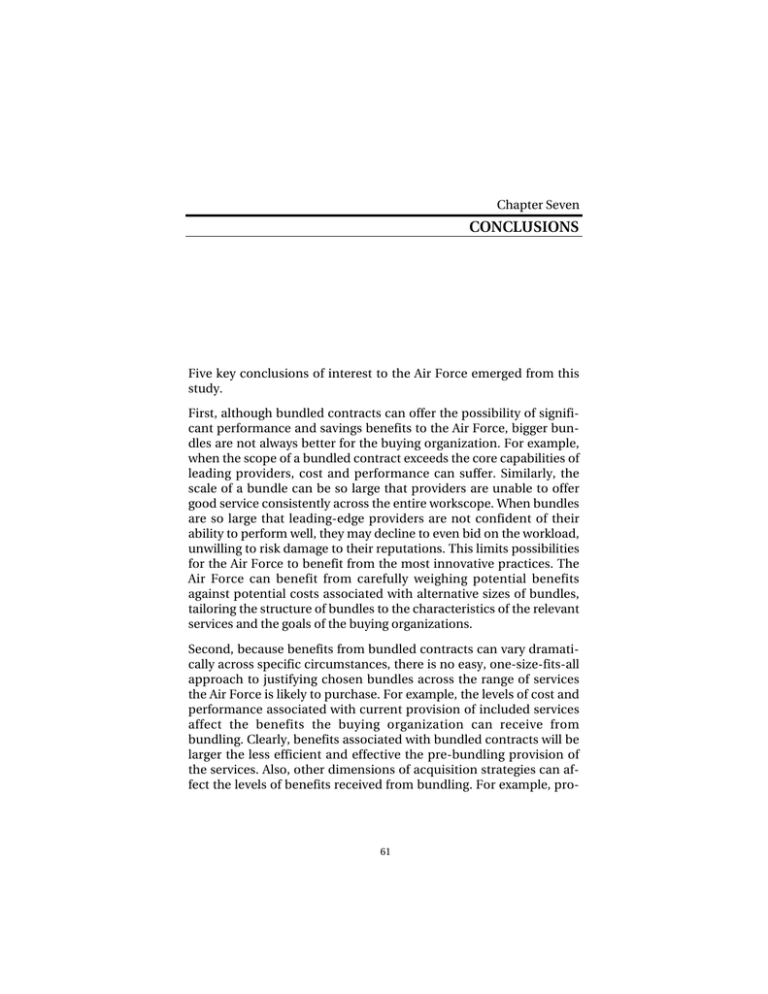
Chapter Seven CONCLUSIONS Five key conclusions of interest to the Air Force emerged from this study. First, although bundled contracts can offer the possibility of significant performance and savings benefits to the Air Force, bigger bundles are not always better for the buying organization. For example, when the scope of a bundled contract exceeds the core capabilities of leading providers, cost and performance can suffer. Similarly, the scale of a bundle can be so large that providers are unable to offer good service consistently across the entire workscope. When bundles are so large that leading-edge providers are not confident of their ability to perform well, they may decline to even bid on the workload, unwilling to risk damage to their reputations. This limits possibilities for the Air Force to benefit from the most innovative practices. The Air Force can benefit from carefully weighing potential benefits against potential costs associated with alternative sizes of bundles, tailoring the structure of bundles to the characteristics of the relevant services and the goals of the buying organizations. Second, because benefits from bundled contracts can vary dramatically across specific circumstances, there is no easy, one-size-fits-all approach to justifying chosen bundles across the range of services the Air Force is likely to purchase. For example, the levels of cost and performance associated with current provision of included services affect the benefits the buying organization can receive from bundling. Clearly, benefits associated with bundled contracts will be larger the less efficient and effective the pre-bundling provision of the services. Also, other dimensions of acquisition strategies can affect the levels of benefits received from bundling. For example, pro- 61 62 Federal Contract Bundling cess-based statements of work, selection of the low-cost (rather than the best-value) provider, fixed-price contracts that provide weak incentives for continuous improvement, or intrusive (and costly) quality assurance methods may erode the benefits the Air Force could receive from large bundled contracts. Third, leading-edge providers are the best source for the information the Air Force needs to tailor and justify bundled contracts. RFIs can be effective tools to help Air Force buyers elicit quantitative information from prospective providers about the benefits of alternative bundling strategies. However, the Air Force must interest these providers in responding by making the RFI as clear and easy to respond to as possible and providing all the information that is needed to eliminate guesswork on the part of the provider. In particular, the Air Force must provide detailed information about the services that can be potentially included in bundles, with baseline information about current costs and levels of performance, as well as the goals of the buying organizations. Accurate baseline information is also important because estimates of potential savings and performance benefits from alternative bundling strategies will only be as good as the baseline data underlying them. If the Air Force is unable to supply accurate information about current levels of cost and performance for the included services, provider estimates of benefits from bundling will not result in a firm basis for justification of the preferred strategy. Fourth, Air Force buyers have challenging roles to play in the RFI process to ensure that the Air Force is able to structure and justify bundles that support the buying organizations’ goals. At the heart of the Air Force’s roles is the need to perform quality market research to identify (1) the leading providers that can help the Air Force structure and justify bundles and (2) the best commercial practices and benefits associated with bundling. Without this information, Air Force buyers cannot write effective RFIs to elicit the needed information and analyze responses. The Air Force buyer must choose an attractive set of services for potential inclusion in bundles. If the set is too broad or narrow, leading providers will be uninterested in responding. The discussion of benefits that the Air Force is most interested in should reflect best Conclusions 63 commercial practices so that providers can easily understand what the Air Force wants. Buyers must create simple rules of thumb for monetizing performance benefits and determine the appropriate goals for small business participation. Finally, once responses are received, the Air Force buyer must analyze the data to structure bundles that best meet buyer goals and construct justifications for them. These roles depend critically on the Air Force’s ability to perform high-quality, ongoing market research and will require that buyers receive training in new skills. Finally, because of the special skills required to successfully implement the RFI approach, the resources required for the Air Force to write effective RFIs and for providers to respond, and the fact that the Air Force will be undertaking similar bundling activities frequently, the Air Force could benefit from centralizing the proposed RFI approach to making and justifying bundling decisions. By facilitating retention of lessons learned over time, such an approach would be more efficient and effective for both the Air Force and prospective providers. Because structuring the bundles of services is only one small part of broader acquisition strategies, the Air Force could also benefit from integration of these bundling activities with its broader, strategic PBSA market research and decisionmaking activities.
